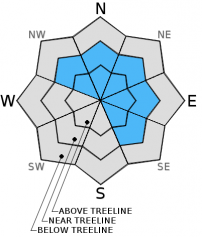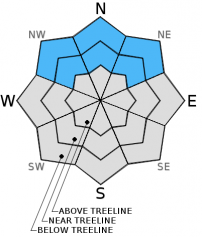| Monday | Monday Night | Tuesday | |
|---|---|---|---|
| Weather: | Cloudy with a slight chance of snow in the morning. Snow likely in the afternoon. | Snow | Mostly cloudy. Snow showers likely. |
| Temperatures: | 26 to 33 deg. F. | 12 to 19 deg. F. | 24 to 31 deg. F. |
| Mid Slope Winds: | Southwest | Southwest | Southwest |
| Wind Speed: | 10 to 15 mph with gusts to 25 mph increasing to 20 to 25 mph with gusts to 35 mph in the afternoon | 15 to 25 mph with gusts to 35 mph | 15 to 20 mph with gusts to 35 mph in the morning |
| Expected snowfall: | up to 2 | 4 to 8 | up to 2 |
| Monday | Monday Night | Tuesday | |
|---|---|---|---|
| Weather: | Cloudy with a slight chance of snow in the morning. Snow likely in the afternoon. | Snow | Mostly cloudy. Snow showers likely. |
| Temperatures: | 24 to 32 deg. F. | 9 to 16 deg. F. | 23 to 29 deg. F. |
| Ridge Top Winds: | Southwest | Southwest | Southwest |
| Wind Speed: | 20 to 25 mph with gusts to 35 mph increasing to 30 to 35 mph with gusts to 50 mph in the afternoon | 25 to 35 mph with gusts to 50 mph | 25 to 30 mph with gusts to 50 mph decreasing to 15 to 20 mph with gusts to 35 mph in the afternoon |
| Expected snowfall: | up to 2 | 4 to 8 | up to 2 |

























